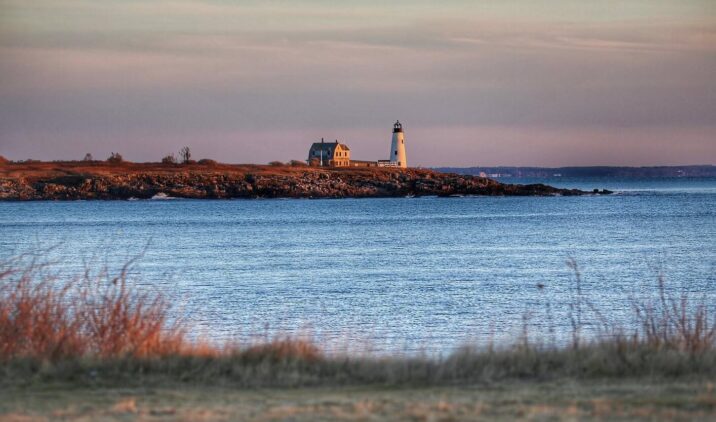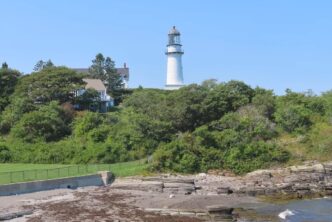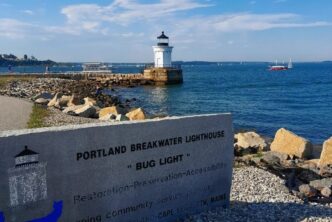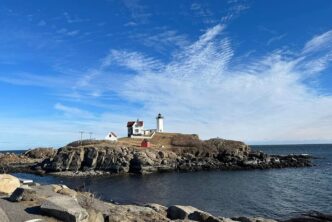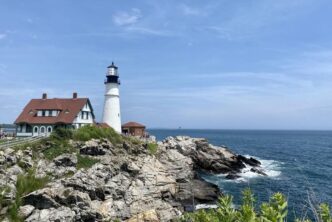The two-story, gambrel-roofed keeper’s house at the Wood Island Light Station is linked by a long, narrow hallway to an impressive, granite lighthouse tower. An adjacent stone-built oil house is also still standing.
History of Wood Island Lighthouse
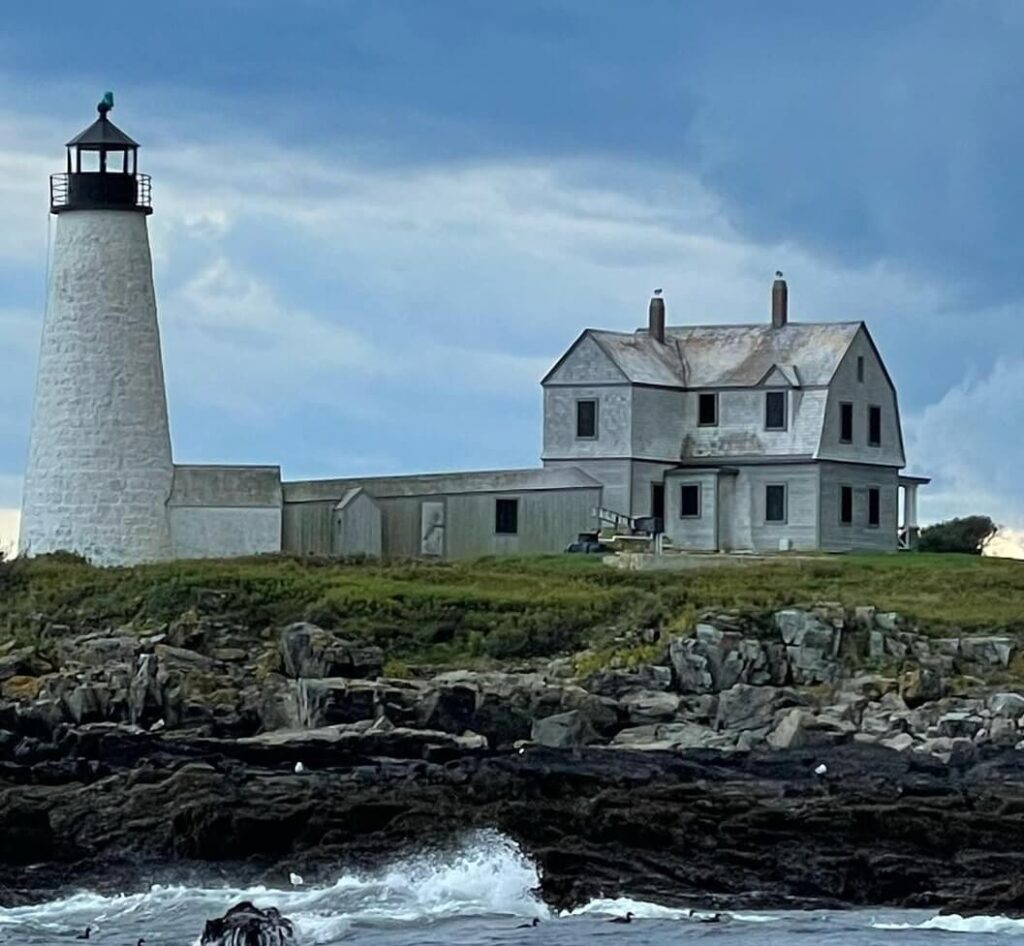
Due to the significant marine activity in and around the economic hubs of Saco and Biddeford, this site was of great importance. During the eighteenth century, both of these towns had grown into substantial regional commerce hubs, and their development carried over into the nineteenth century.
The station at Wood Island was the most southerly of Maine’s major navigational aids until Whaleback light’s construction in 1829. The eponymously named lighthouse, situated on Wood Island, is close to the Biddeford Pool region and is approximately east of the mouth of the Saco River.
A 45-foot octagonal wooden lighthouse was built in 1808 (the same year as West Quoddy Head Light) and put into operation the following year. This tower remained in use until 1839, when a new one-story granite house and a 44-foot conical rubblestone tower with a base diameter of 20 feet and a top diameter of 10 feet were constructed.
A branch of the American Lighthouse Foundation was established to look after the lighthouse in early 2003. The keeper’s home, boathouse, and oil house were all fully restored, thanks to the efforts of the Friends of Wood Island Lighthouse organization.
They also look after the seven acres of property near the light station and the wooden walkway that connects the boathouse to the keeper’s home. The lighthouse tower renovation project started in the autumn of 2009 and took approximately one year to complete.
The Friends of Wood Island Lighthouse provide access to the light for the general public. The Audubon Society also protects around 30 acres of Wood Island as a bird sanctuary that serves as a place for breeding and a crucial resting place for migrating birds.
Wood Island Lighthouse lies to the east of the Saco River mouth. It was constructed in 1808, mirroring the emergence of Saco and Biddeford as regional maritime hubs. The tower and house were rebuilt in 1839. The site was restored in the 21st century and remains popular with tourists.
Planning Your Visit
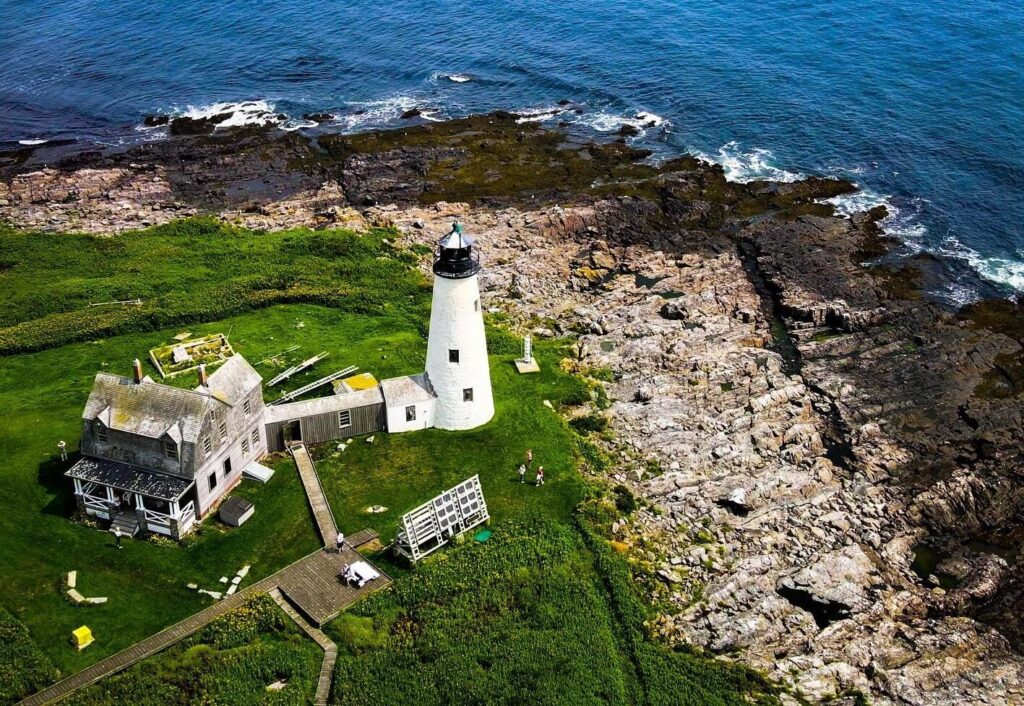
Biddeford Pool offers a distant view of Wood Island Light. If a closer look is more to your tastes then a scheduled visit offered by Friends of Wood Island Lighthouse may be suitable.
Visitors board a quick 15-minute boat journey across Winter Harbor to the Wood Island boat launch after meeting their tour guide at Vines Landing (gather approx. 30 minutes before the boat departure time).
The current schedule for these tours is seasonal — July and August (Wednesdays, Thursdays and Saturdays) only. Alternatively, the organizers can be reached at (207) 200-4552.
This trip includes commentary from a tour guide and an optional ascent of the light tower’s 60 stairs. Furthermore, on Maine Open Lighthouse Day, the Wood Island keeper’s residence and light tower are available for tours. This annual occasion offers unparalleled insight and access into Maine’s maritime past.
The island is owned by the Maine Audubon Society, and the facilities are leased to the Wood Island Lighthouse Society, a branch of the American Lighthouse Foundation.
Wood Island Light is generally only available to the public on excursions organized by the Friends of Wood Island Lighthouse. However, private charters may depart from South Portland, Kennebunkport, or Biddeford. Maine.gov maintain a list of charter options.
Biddeford Pool on the mainland offers distant views of the Wood Island Lighthouse. Generally, the best option is an immersive tour and up-close look offered by the local society responsible for the site’s upkeep.
Interesting Facts
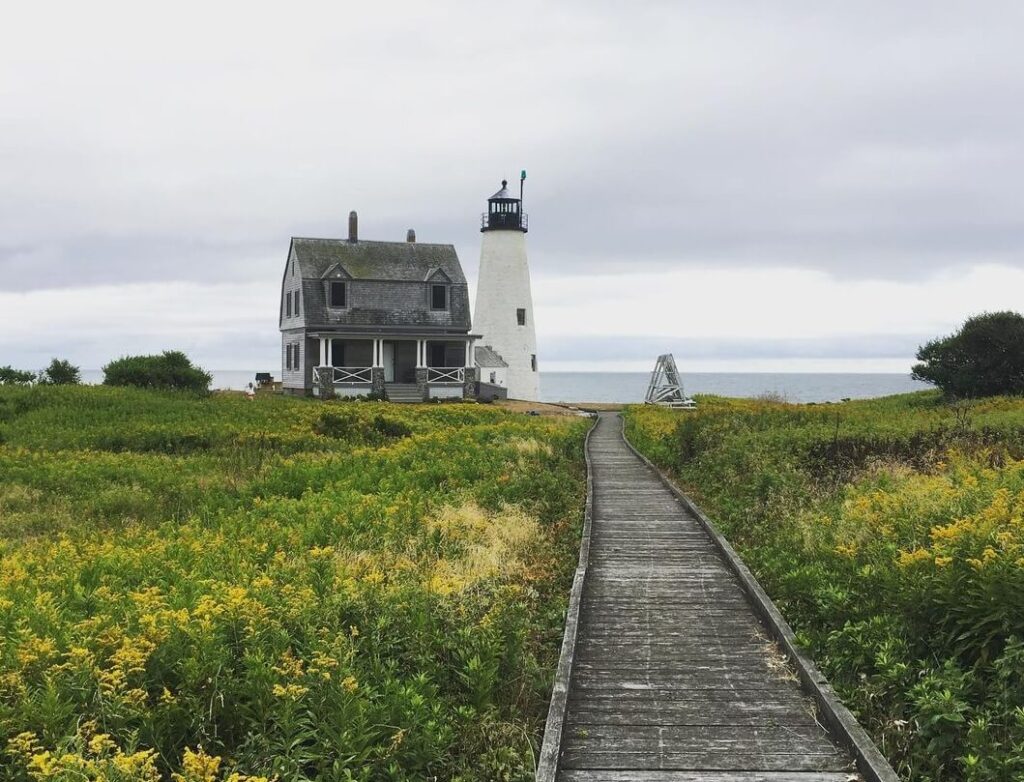
The 1808-built lighthouse on Wood Island is 47 feet tall from its base to the focal plane of the lens.
A trio of asymmetrically positioned window apertures that formerly housed six-over-six double-hung sash highlight the building’s southeast facade. They cast light on the spiral staircase within.
A centrally located ten-sided lantern and an iron walkway with a railing are supported by the tower. The southwest face of the tower is connected to a modest frame house with a single window on its east side and a gable roof.
The gable end adjoins a long, low hallway leading to the ell of the keeper’s house. The house, which faces south, is covered in clapboards and has two widely spaced gable-roofed dormers in addition to a porch.
In its original form, the porch had eight paired posts on brick piers, two windows, and a central door hidden behind them. Three windows in the ell and two windows on each story are symmetrically positioned on the east gambrel end. On the west end, the fenestration design from the main block is replicated.
The intersection of the front block and ell is bordered at the back by a shed extension with a single window. The ell has a window on the second floor and a pent gable end. The main building and the ell’s roof ridges are each punctuated by a pair of brick flues.
Wood Island Light, which is situated on the east side of the island, denotes both the entry to the Saco River and the south entrance to Wood Island Harbor.
According to legend, the spirit of a lobsterman who was fatally injured on the island is claimed to reside here to this day. The youngster, a drunken teenage vagrant, shot the lobsterman then panicked and turned the gun on himself.
President Jefferson gave the order to use granite stones to construct the first tower on Wood Island in 1808. Under President Buchanan, the present station was constructed in 1858 to improve the station’s utility. It is also made of granite and had a fourth-order Fresnel lens when it was first constructed.
A VRB-25 optic was put in place in 1972, and the lantern was taken down from the tower. Several people complained about the ugly “headless” tower, therefore Wood Island Light had a new lantern chamber installed.
A white and green flash can now be seen for 18 miles from the top of the 47-foot tower, which is 71 feet above sea level. The fog bell tower has been demolished, however Vine’s Landing near Biddeford still retains the bell on exhibit.
The two-story Dutch colonial keeper’s quarters, together with an oil house, a storage structure, and a wooden walkway, are still standing.
Key Information
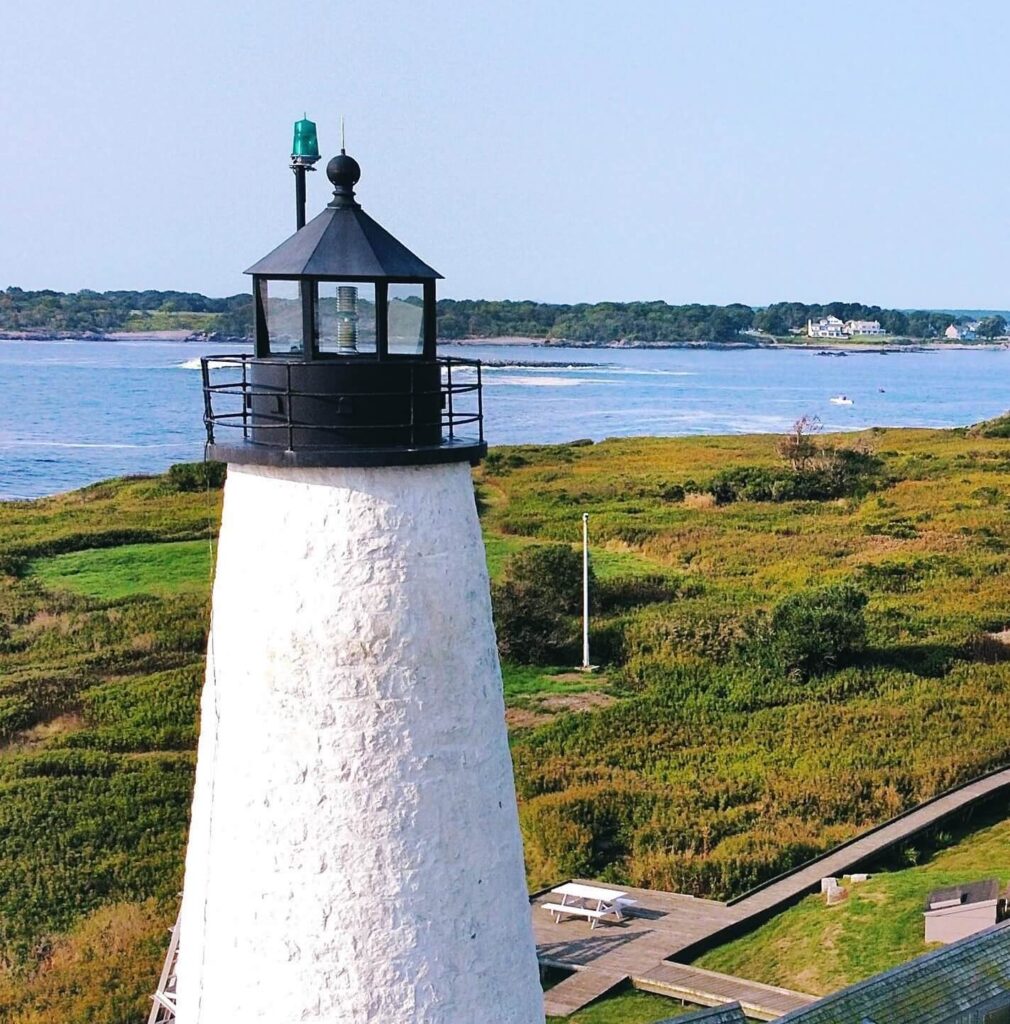
| Location | Near Biddeford, ME (43° 27′ 24″ N, 70° 19′ 44″ W) |
| Established | 1808 |
| Height | 47 feet (71 feet above sea level) |
| Type | Conical tower |
| Construction | Granite |
| Architect | US Army Corps of Engineers (1858 rebuild) |
| Sequence | White/green light alternating (ON – 10 seconds, OFF – 10 seconds) |
| Fog Horn | 2 sounds every 30 seconds |
| National Register of Historic Places | Added 1987 |
| Administrative Address | Friends of Wood Island Lighthouse (P.O. Box 26, Biddeford Pool, ME, 04006) |
FAQ
Where is the best place to park?
The best parking option will depend on your plan for your visit. If you wish to seek a distant view of the light station, head to the northern edge of Biddeford Pool. If instead you opt for a boat tour, head to Vines Landing on the western edge of Biddeford Pool and take instructions from your guide.
What other facilities and services are available?
Wood Island itself has little in the way of amenities so its advisable to carry a light rucksack with essentials for your trip. The guided tour takes approximately 1.5 hours and includes around 1 mile of walking. Children must be 12 or over to climb the tower and accompanied by an adult. Check weather conditions ahead and dress accordingly.
What are the best dining and accommodation options nearby?
Biddeford Pool has very limited choice beyond a hot dog stand and a few small lodging / vacation rental homes. Hidden Pond (resort & restaurant) is an upscale, expensive lodging option a short distance south. For a wider range of options the nearest towns are Biddeford/Saco and Kennebunkport.

